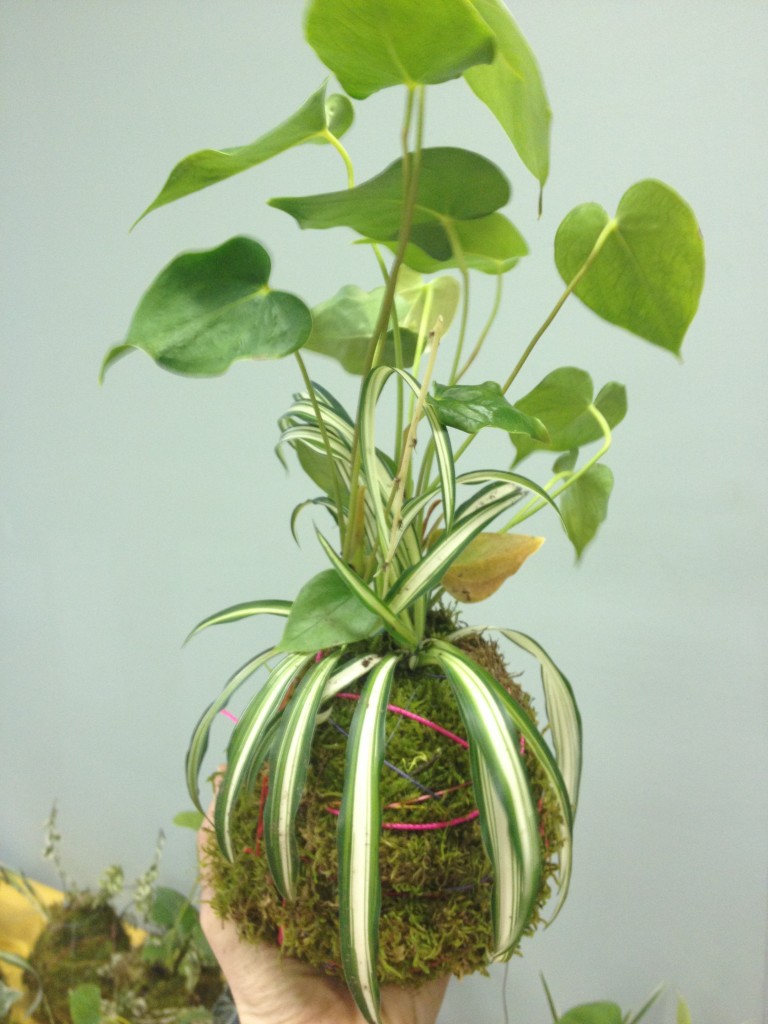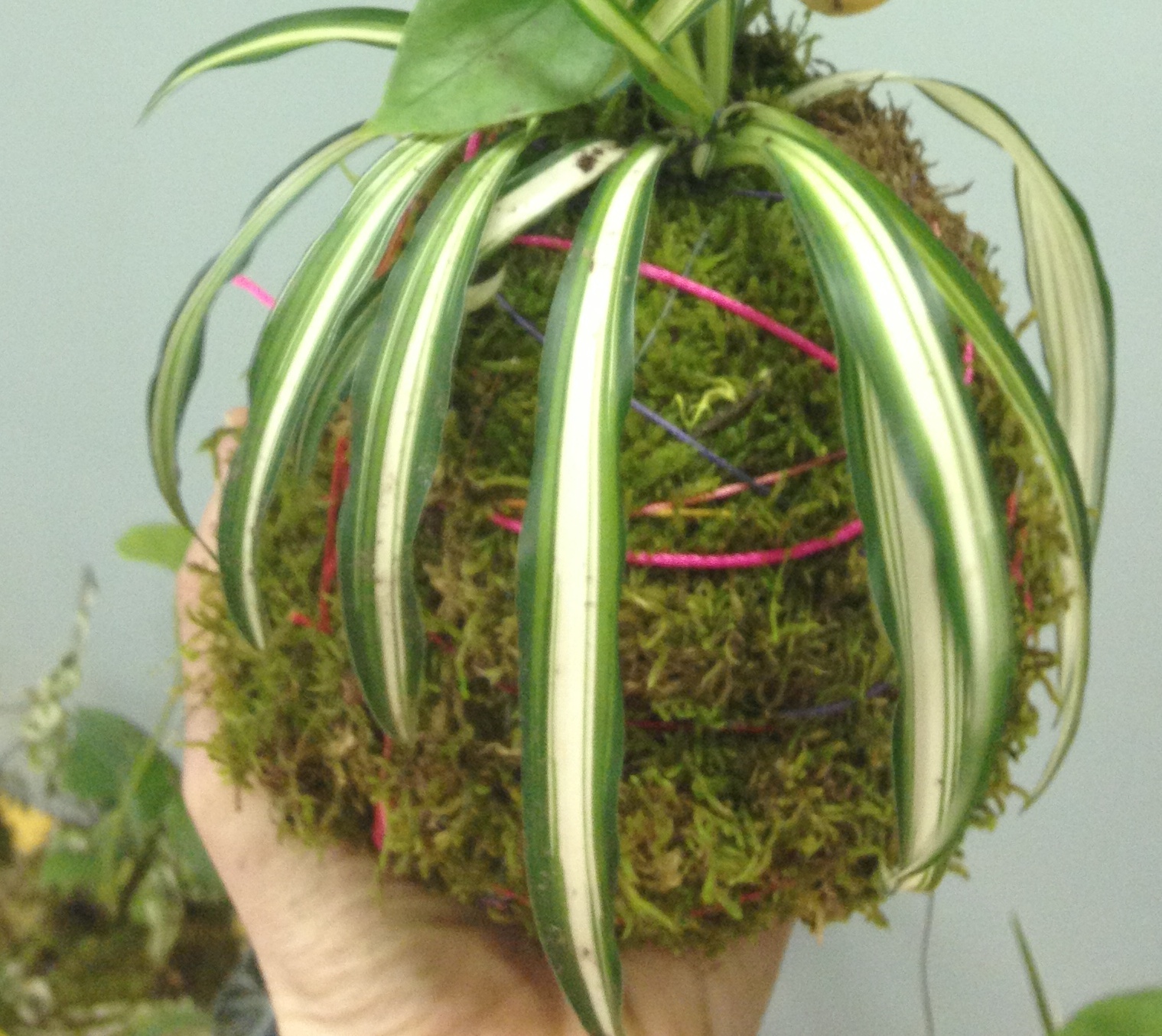Japanese moss balls, also called bonsai Kokedama, look great hanging in homes, on a lanai or porch or on trellises and arbors. Making a Kokedama moss ball can be a fun way of getting your hands dirty and it’s easier to make these hanging plants than one might imagine. This Japanese garden method, the kokedama moss ball, is taking Pinterest by storm with the growing popularity of vertical gardens and the wide variety of options for your Kokedama moss ball that allow plants to easily be added to any space, indoor or outdoor, requiring little water if the proper plant species are selected. The environmental impact is nil, other than getting some green in your space and a little extra oxygen boost from the hanging plant. Ready to take less than an hour to make a Kokedama moss ball?

Here is what you need to make a Kokedama moss ball:
- Soil, potting soil
- Peat Moss
- Perlite, such as Excelerite
- Sheet moss
- String
- Bucket
- Scissors
- Spray bottle
- Plants: Shade loving, drought hardy, slow growing
- Water
A few optimal plant varieties:
Succulents, thick plants that hold water and are very drought hardy since the soil and moss ball will be hanging allowing it to dry out easily. One great variety is the sedeveria.
Anthuriums are great options to add a flowering plant to the mix.
Tillandsia, air plants, can also make a great addition to Kokedama.
Select shade-loving plants if hanging inside or in a covered area.
Slow growing is important as you won’t want to undo the Kokedama moss ball often, if at all.
How to plant a Kokedama moss ball:
- Mix about 50 percent soil, 25 percent perlite and 25 percent peat moss in a bucket and then begin adding water slowly so the soil can be firmly packed
- Pack the soil until it’s a sturdy ball about the size of your hand. Excelerite, organic and OMRI Organic Materials Review Institute listed chelated montomorillonite clay, is not necessary, but we did notice it has a cohesive property that makes it easier. It’s also great for plant health. A Kokedama moss ball can be created without Excelerite, you just find in one of the next steps that you need to wrap the moss around the ball faster to help it stay together. This is the only one of the materials easiest to find for purchase online, such as on Amazon. All other materials are easily found at Home Depot or a local garden supply center.
- Here’s the fun part: You know the ball is properly packed when you toss it lightly into the air and catch it and it stays compact, like a snowball.
- Then, split the ball in half just by breaking it gently with your hands.

- Put the roots of the plants you’ve selected between the two halves of the soil ball. Short root systems and selection of just two plants is generally easiest.
- Then, put the soil ball back together, perhaps adding more soil to reform the ball.
- Cut your sheet moss to size to fit your soil ball.
- Spray the moss with water so it adheres to the soil ball.
- Wrap the moss ball with string to further help keep the moss tied around the ball and make a knot toward the top, leaving some string to hang the ball, generally plant side up.
Voila, in less than an hour, you have a kokedama moss ball. Each time you will get faster at it and can have more fun with it.
Want more?
Besides on Pinterest, you can see Kokedama in botanical gardens, including at Naples Botanical Garden, where the idea for this Kokedama moss blog originated thanks to the Naples Garden Club and their Idea Garden located within the Naples Botanical Gardens.
Want more garden, lawn and landscape tips and ideas? Find us on Facebook, Twitter, Google +, follow our blog and sign up for our email newsletter.
Shop Geoponics now for earth friendly, organic garden, lawn, pond, professional turf and landscape products. Geoponics makes growing easy, successful and good for the planet.

